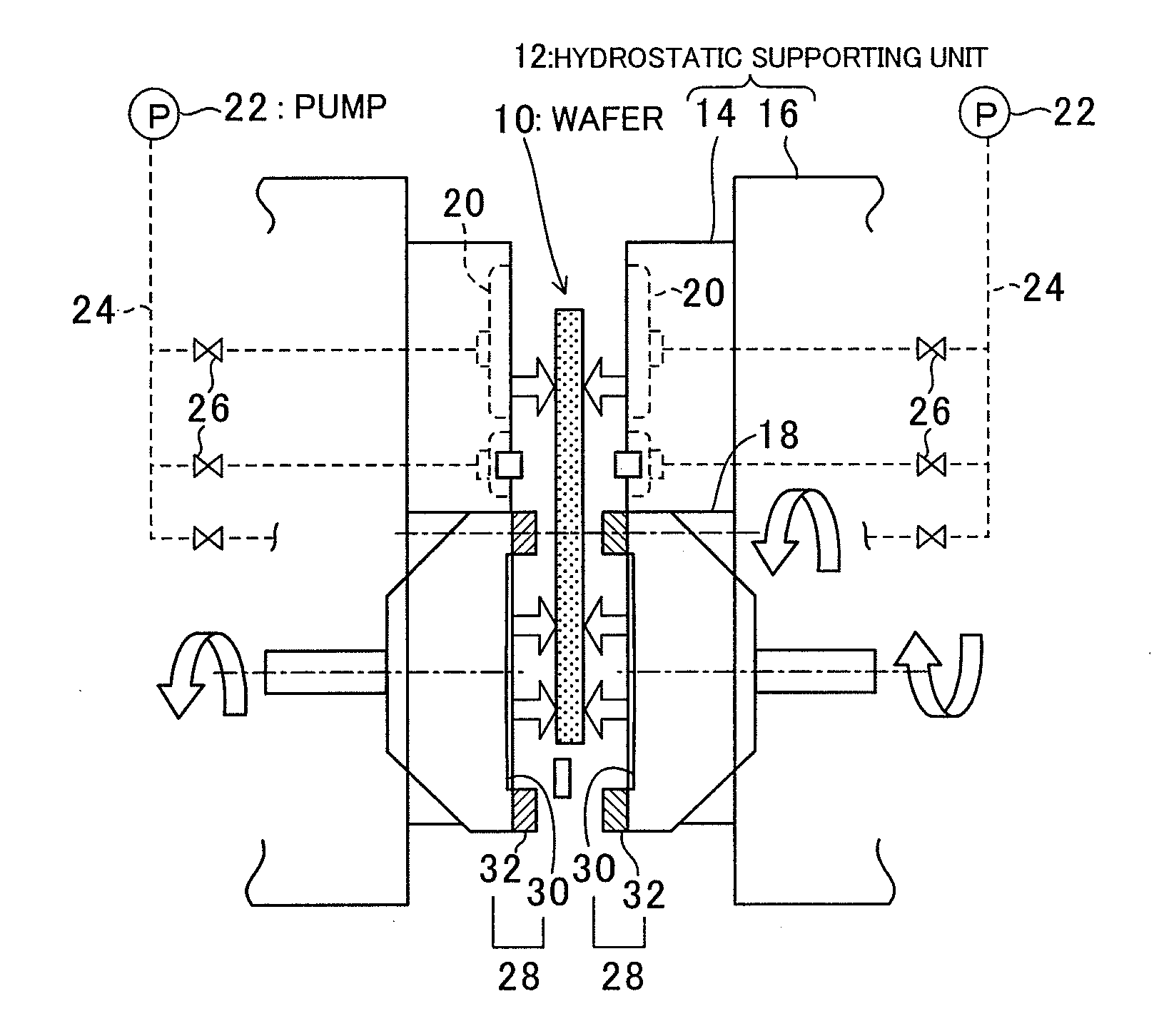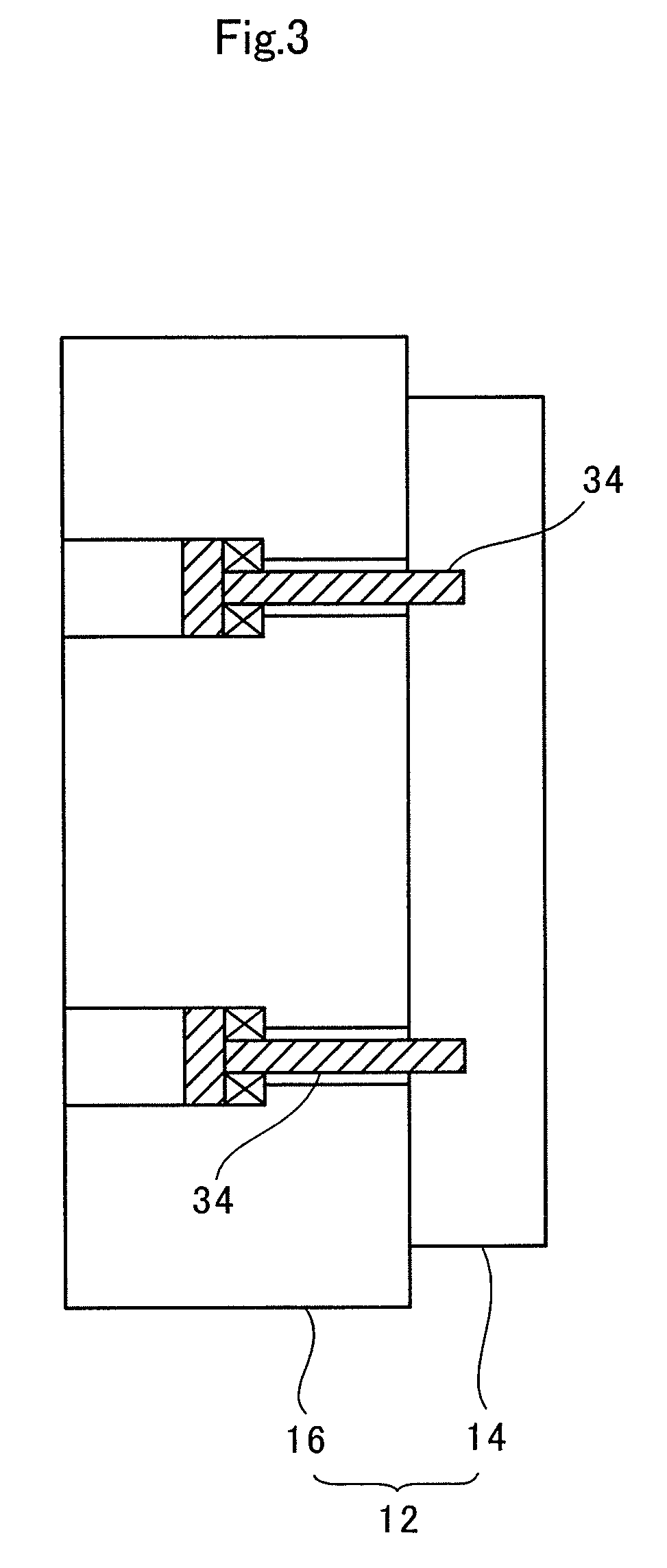Double-side grinding apparatus for wafer and double-side grinding method
- Summary
- Abstract
- Description
- Claims
- Application Information
AI Technical Summary
Benefits of technology
Problems solved by technology
Method used
Image
Examples
Embodiment Construction
[0024]The following is a description of an embodiment of a double-side grinding apparatus for wafers according to the present invention, with reference to the accompanying drawings. The following embodiment is merely an example of the present invention, and various other structures may be used within the technical scope of the invention.
[0025]FIG. 1 is a cross-sectional view schematically showing the components of the hydrostatic supporting unit and the components surrounding the hydrostatic supporting unit in a double-side grinding apparatus for wafers according to the embodiment. FIG. 2 is a perspective view of the hydrostatic supporting unit shown in the upper left part of FIG. 1. As shown in FIG. 1, the double-side grinding apparatus of this embodiment has a wafer 10 to be ground at its center portion, and a pair of hydrostatic supporting units 12 at both side portions. Each of the hydrostatic supporting units 12 is formed with a hydrostatic pad member 14 directly facing the waf...
PUM
| Property | Measurement | Unit |
|---|---|---|
| Temperature | aaaaa | aaaaa |
| Length | aaaaa | aaaaa |
| Thermal expansion coefficient | aaaaa | aaaaa |
Abstract
Description
Claims
Application Information
 Login to View More
Login to View More - R&D
- Intellectual Property
- Life Sciences
- Materials
- Tech Scout
- Unparalleled Data Quality
- Higher Quality Content
- 60% Fewer Hallucinations
Browse by: Latest US Patents, China's latest patents, Technical Efficacy Thesaurus, Application Domain, Technology Topic, Popular Technical Reports.
© 2025 PatSnap. All rights reserved.Legal|Privacy policy|Modern Slavery Act Transparency Statement|Sitemap|About US| Contact US: help@patsnap.com



